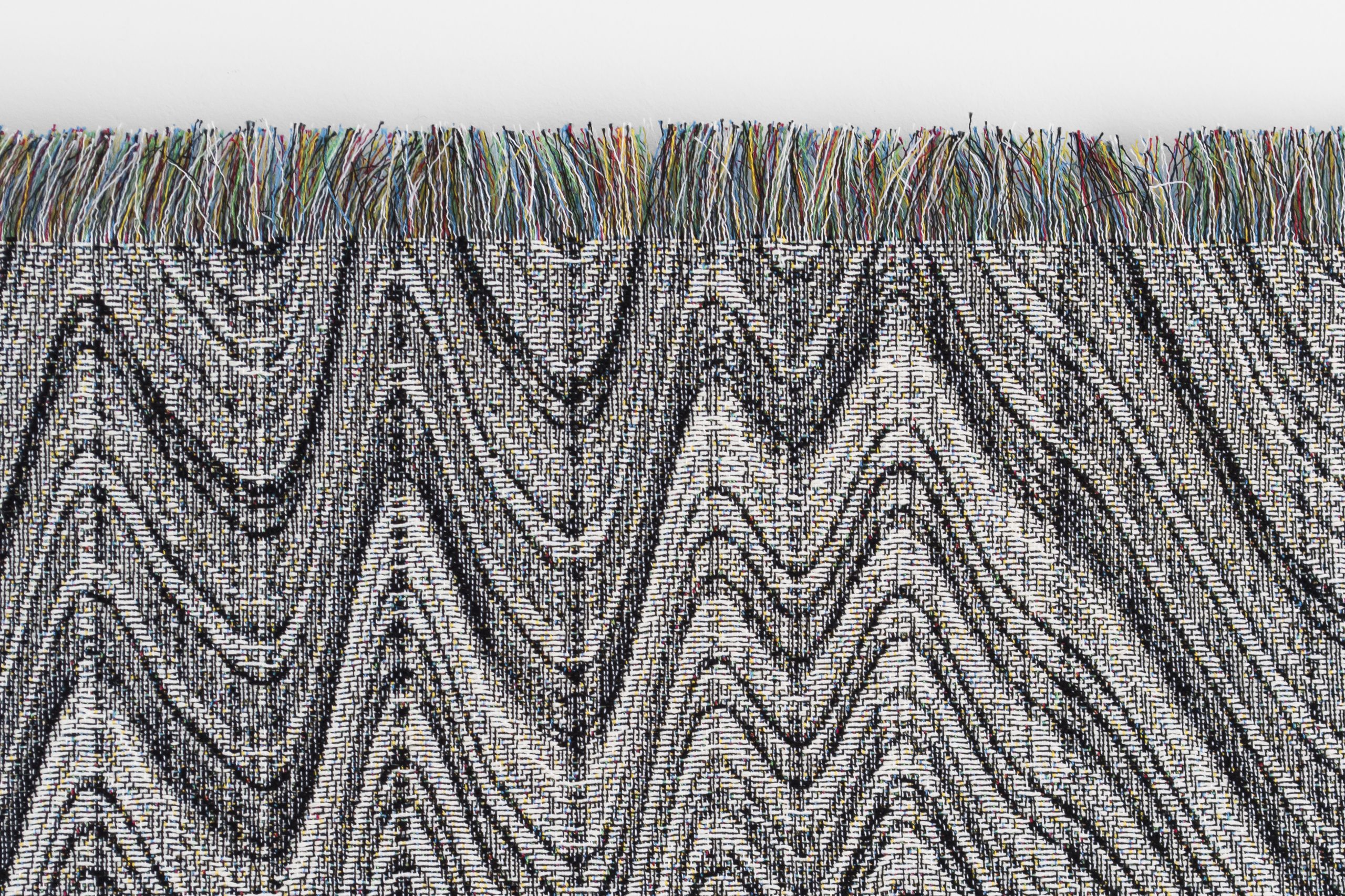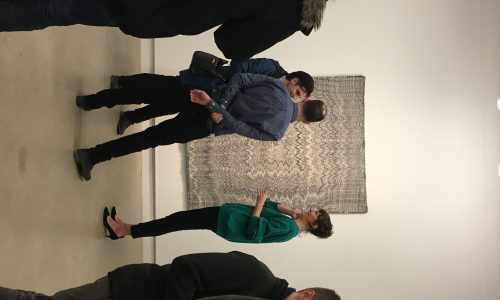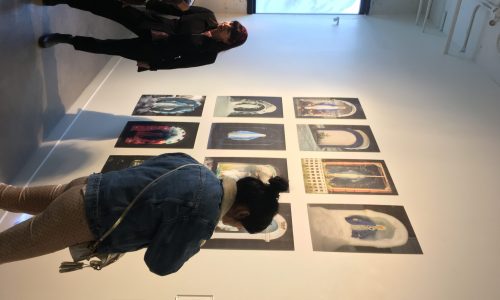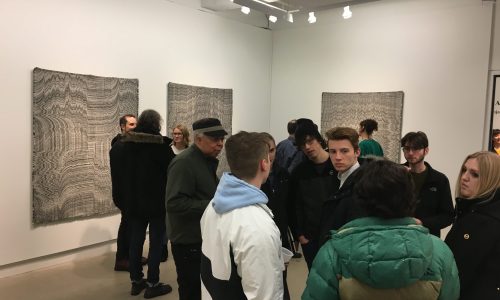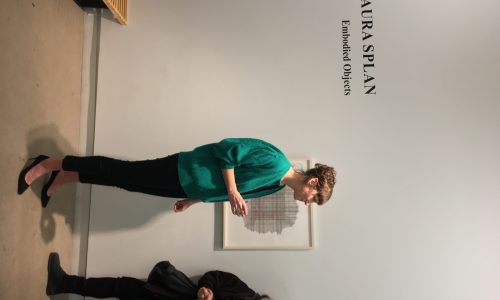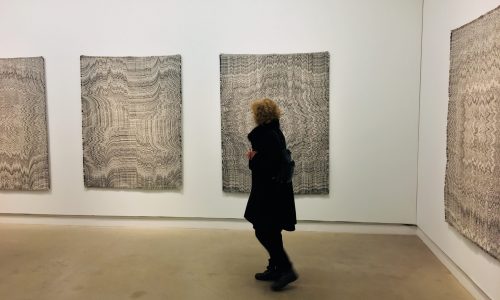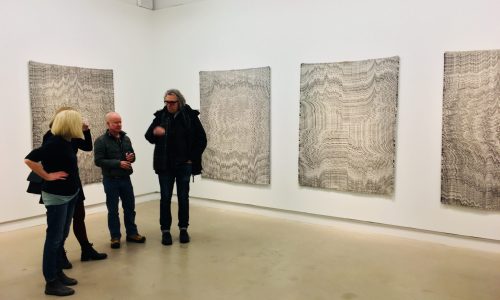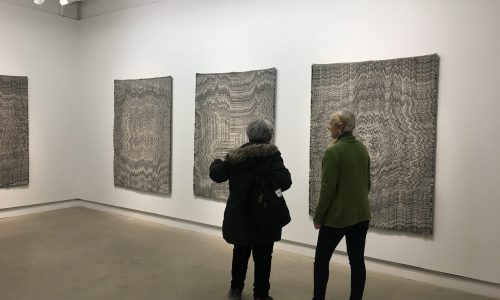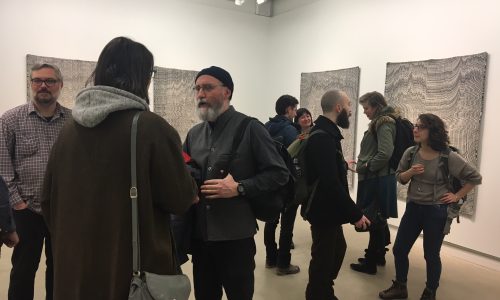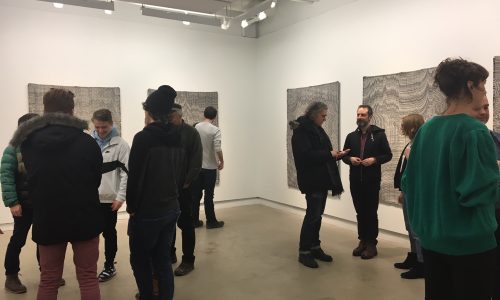17
Fév 2018
Laura Splan | Embodied Objects
Laura Splan | Embodied Objects
15 mars –21 avril 2018
Vernissage le 15 mars 2018, dès 17h30
Dans sa pratique artistique interdisciplinaire, Laura Splan explore les croisements entre l’art, la science, la technologie et l’artisanat. Elle examine, dans ses projets de nature conceptuelle, les manifestations matérielles de nos relations évolutives avec le corps humain. Elle réexamine les perceptions et les représentations du corporel au moyen de diverses techniques traditionnelles et néomédiatiques. Elle juxtapose fréquemment le quotidien et l’étrange, pour remettre en question des notions culturelles préconçues liées à l’ordre et au désordre, au fonctionnel et au dysfonctionnel. Ses alliages fréquents de textiles et de technologie défient les valeurs associées au « fait main » dans la production artistique et contestent les notions d’agentivité et de hasard en esthétique. Une grande part de son travail est issue d’expérimentations avec des matériaux et des processus (sang, masques gommages cosmétiques, fabrication numérique) qu’elle exploite pour leurs sous-entendus narratifs et leur potentiel inexploité. Dans son plus récent travail, elle emploie des biocapteurs pour produire, à l’aide des données ainsi recueillies, des formes et des motifs pour créer des objets et des images de même que des mouvements pour dispositifs actionnés par biocapteurs.
L’exposition Embodied Objects inclut des sculptures de fabrication numérique, des tapisseries et des œuvres sur papier créées à partir de lectures électromyographiques du corps de Splan. Manifest est une série de sculptures basées sur des relevés mesurant les niveaux fluctuants d’électricité dans les muscles de son visage. Des activités neuromusculaires associées à des expériences d’émerveillement ont été exécutées par l’artiste, prenant la forme d’expressions faciales et de mouvements corporels (par exemple : sourire ravi, clignement d’yeux incrédules, sourcils froncés par le doute). De chaque action ont découlé des données uniques qu’un logiciel, conçu par l’artiste, a traduites en une courbe. Chaque courbe a ensuite servi de profil pour une sculpture imprimée en 3D faisant partie de la série Manifest. Ces mêmes données ont servi à générer l’imagerie frénétique des tapisseries Embodied Objects et de la série d’impressions Squint. L’imagerie a été générée par un logiciel conçu pour répéter, pivoter et colorer de manière aléatoire les ondulations de l’électromyographie de façon à créer des « tissages » qui ont subséquemment servi de motifs à des tapisseries Jacquard informatiques et à des impressions numériques à pigments de qualité archive. Les motifs générés par ordinateur « tissent » les ondulations ensemble dans les deux directions, soit la chaîne et la trame. Tandis que l’image d’ensemble a une forme géométrique, unifiée, voire soignée, une inspection attentive révèle que la structure chaotique de l’extrémité de chaque onde a été modifiée « à la main ». À l’aide d’un stylet, l’indice zéro fixe présent au début et à la fin de chaque ligne vectorielle a été modelé par l’artiste pour créer des détails semblables à des fils sur l’image. L’exposition explore le potentiel qu’ont les objets pour incarner les expériences humaines et pour matérialiser l’intangible. Le procédé hybride utilisé par Splan remet en cause des notions de labeur et d’artisanat dans leur lien à la matérialité et à la technologie. En combinant processus manuels et numériques, ainsi que textiles traditionnels et technologies néomédiatiques, son œuvre déstabilise les modes de catégorisation et valorisation de chacun d’eux. Les sous-entendus narratifs de ces catégories sont exploités pour le potentiel qu’ils offrent dans l’exploration de la manière dont la technologie, les données et les artefacts culturels modulent notre compréhension du corps humain.
Laura Splan a participé à de nombreuses expositions individuelles et collectives, entre autres au Museum of Arts & Design (New York, NY), au Museum of Contemporary Craft (Portland) et au Beall Center for Art + Technology (Irvine). Son œuvre a fait l’objet de plusieurs expositions aux États-Unis, ainsi qu’en Islande, Corée de Sud, Angleterre, Allemagne, Suède, Autriche et ailleurs. L’exposition Embodied Objects présentée chez Occurrence—Espace d’art et d’essai contemporains est sa première exposition individuelle au Canada. Parmi les commandes artistiques qu’elle a reçues, mentionnons ses tableaux peints au résidu de savon pour le Center for Disease Control et ses sculptures de dentelles numériques pour le Gen Art New Media Art Exhibition. Les œuvres de Splan figurent dans maintes collections incluant celle de la Thoma Art Foundation. Des commentaires et des articles sur son travail sont parus dans le New York Times, American Craft et Discover Magazine. Des essais et interviews associés à Splan ont été publiés dans Art Practical et Proceedings of the National Academy of Sciences. Elle est récipiendaire d’une bourse de recherche dans les musées médicaux décernée par la Jerome Foundation. Elle a été invitée à des résidences d’artiste au Vermont Studio Center et à l’Institute for Electronic Arts, et est lauréate du Pollack Krasner Fellowship pour le programme Byrdcliffe Artist in Residence. Splan a donné de nombreuses conférences à différents endroits, dont le California College of Art, la New York Academy of Sciences et le Center for Human-Computer Interaction en Autriche. Elle est fréquemment conférencière invitée sur le sujet des croisements entre l’art, la science et la technologie dans des institutions académiques, incluant l’Université Standford et celle du Maine. Laura Splan vit et travaille à New York.
Remerciements
Laura Splan aimerait remercier le programme de résidence ACRE (États-Unis) et son équipe technique audiovisuelle pour leur assistance et leur appui à ce projet.
Laura Splan’s interdisciplinary studio practice explores intersections of art, science, technology and craft. Her conceptually based projects examine the material manifestations of our mutable relationship with the human body. She reconsiders perceptions and representations of the corporeal with a range of traditional and new media techniques. She often combines the quotidian with the unfamiliar to interrogate culturally constructed notions of order and disorder, function and dysfunction. Her frequent combinations of textiles with technology challenge values of « the hand » in creative production and question notions of agency and chance in aesthetics. Much of her work is inspired by experimentation with materials and processes (blood, cosmetic facial peel, digital fabrication), which she mines for their narrative implications and untapped potentials. Her recent work uses biosensors to produce data-driven forms and patterns for objects and images as well as for movement with biosensor-actuated apparatus.
The exhibition “Embodied Objects” includes digitally fabricated sculptures, tapestries and works on paper created using (EMG) electromyography readings from Splan’s own body. “Manifest” is a series of sculptures based on readings that measured fluctuating levels of electricity in her facial muscles. Neuromuscular activities associated with experiences of wonder were performed as facial expressions and bodily movements (i.e. smiling in delight, blinking in disbelief, frowning in confusion). Each activity produced unique data that was translated into a curve using custom software written by the artist. Each curve served as a profile for a different 3D printed sculpture for the “Manifest” series. The same data was used to generate the frenetic imagery in the “Embodied Objects” tapestries and “Squint” print series. The imagery was generated by software designed to repeat, rotate, and randomly colorize the EMG waveforms in order to create “weavings” that served as patterns for computerized Jacquard tapestries and archival pigment prints. The computer-generated patterns “weave” the waveforms together in both directions—warp and weft. While the overall image of the print has a geometric, unified, and even tidy form, upon close inspection one can see the chaotic structure of each end of each waveform has been altered “by hand”. Using a stylus pen, the flat zero value at the beginning and end of each vector line has been teased out and reshaped by the artist to create thread-like details among the image. The exhibition examines the potential for objects to embody human experience and to materialize the intangible. Her hybrid process interrogates notions of labor and craft as they relate to material and technology. By combining hand and digital processes with traditional textiles and new media technologies, the work destabilizes how each is categorized and valued. The narrative implications of these categories are mined for their potential to explore how technology, data, and cultural artifacts mediate our understanding of the human body.
Laura Splan’s work has been included in numerous solo and group exhibitions at Museum of Arts & Design (New York, NY), Museum of Contemporary Craft (Portland, OR and Beall Center for Art + Technology (Irvine, CA). Her work has been exhibited widely in the U.S., Iceland, South Korea, England, Germany, Sweden, and Austria, and elsewhere. This is her first solo exhibition in Canada. Commissioned projects for her work have included soap residue paintings for the Center for Disease Control and computerized lace sculptures for the Gen Art New Media Art Exhibition. Her work is in several collections including the Thoma Art Foundation. Reviews and articles featuring her work have appeared in The New York Times, American Craft, and Discover Magazine. Splan’s essays and interviews have been published in Art Practical and the Proceedings of the National Academy of Sciences. She received a Jerome Foundation Grant for research at medical museums. She has been awarded artist residencies at Vermont Studio Center and the Institute for Electronic Arts, and she received a Pollack Krasner Fellowship for the Byrdcliffe Artist in Residence program. Splan has spoken widely at a variety of venues including California College of Art, New York Academy of Sciences, and the Center for Human-Computer Interaction (Austria). She is frequently a visiting lecturer on intersections of Art, Science, and Technology at academic institutions including Stanford University and University of Maine. She lives and works in New York City.
Thanks
Laura Splan would like to thank the ACRE Residency Program (USA) and its Audio/Visual Technical Staff for project assistance and support.
